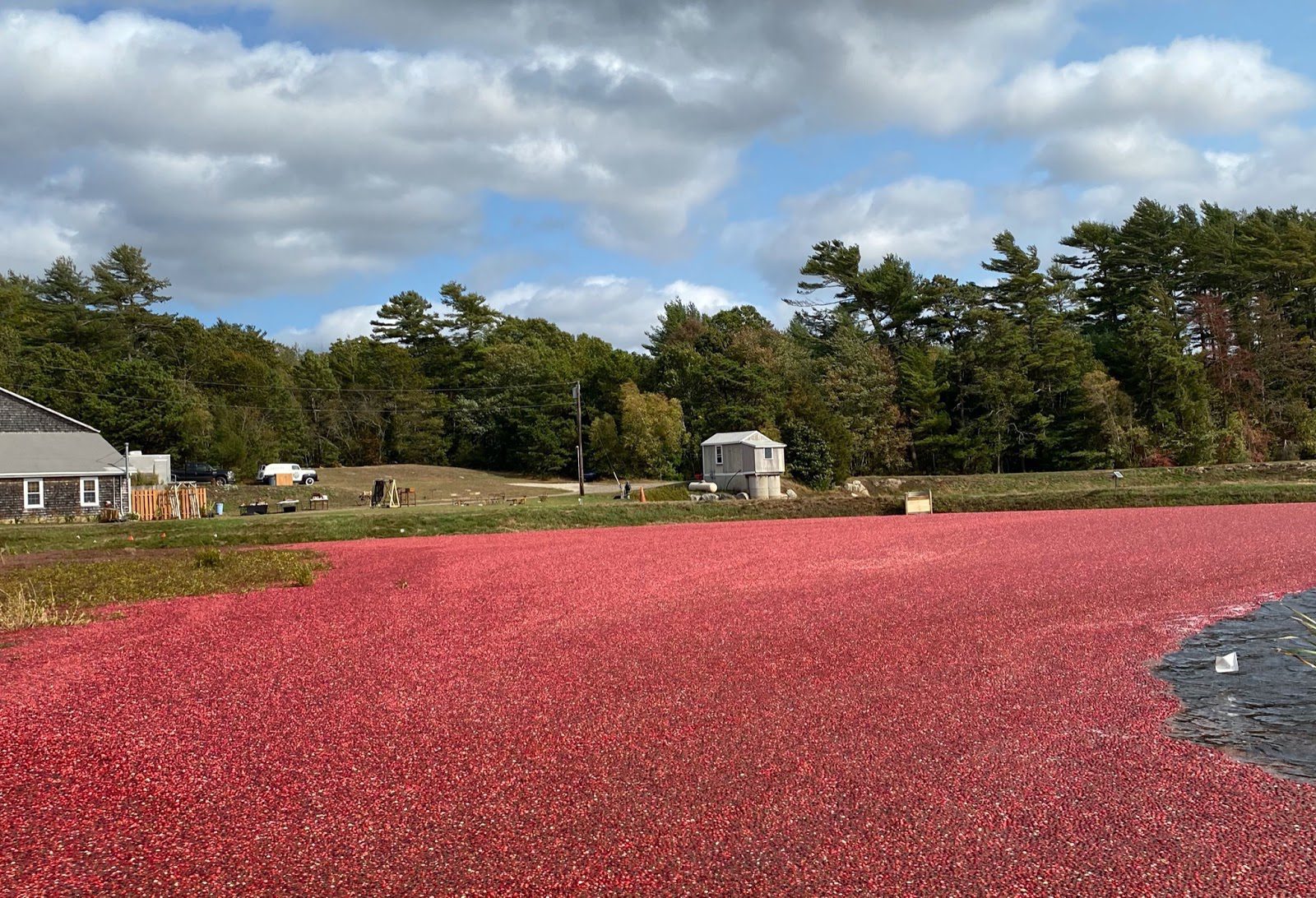Solar plus storage is a combination popping up across the United States because it allows people to run on solar energy even after the sun has set. A new project in Southern Massachusetts will capture and store solar energy while growing one of the area’s most famous crops: cranberries. Throughout New England, cranberries grow in a special wetland environment called cranberry bogs. Generations of family cranberry farmers grow and harvest plants that are over 150-years-old, but a new solar plus storage installation will allow New Englanders to harvest solar energy on the same land they grow their cranberries. Pine Gate Renewables (PGR) is working with local farmers to install 9MW of solar panels with 36 MWH of storage over fully-functioning cranberry bogs, in a dual-purpose land use called agrivoltaics.
“It’s quite a feat, but our talented engineers have figured out how to construct the solar arrays over the cranberry bogs so that both can coexist,” Tami von Isakovics, PGR Director of Communications & Marketing, shared with The Business Download. “To create enough space for the cranberry bogs below, the Solar Carver projects will be built on 25-40-foot-long wooden utility poles, which are more durable for the wet terrain. These poles will be driven 15-30 ft into the ground in order to keep the trackers at least 10 ft above the cranberry bogs and allow for annual fall harvesting.”
The agrivoltaics projects, named Carver 1 and 3, will be built over cranberry vines that are 100 years old, so PGR is working with local farmers to ensure the build-out will not affect the cranberry harvest next year. The project will bring dozens of construction jobs to the area while continuing to produce cranberries in the area, and Carver 1 and 3 will serve as a test-bed for the future of agrivoltaics in the area. Tami von Isakovics said, “Pine Gate is also involved in a three-year study by UMass-Amherst to research this process, which will look at the economic and social impact of solar-agriculture co-location on farms by establishing site trials and assessing crop productivity, soil health, and micro-climatic conditions.”
The project will generate enough electricity to power approximately 1,800 homes, and that energy will go straight into the local community. The onsite 36 Megawatt-hours of storage will be strategically dispersed into the local grid to maximize the benefits to the community. Local farmers are thrilled to be a part of the state’s future. Tami von Isakovics shared, “They’re very excited about being able to continue farming and be a part of Massachusetts’ solar energy development.” The $53 million project is expected to begin producing energy by the end of this year.
Although this is PGR’s first project in the state of Massachusetts, they already operate agrivoltiac projects all over the country. “We have several other projects already in the works. Our Sheep Solar project in Turner, Oregon, has sheep that graze underneath the panels,” Tami von Isakovics said. “Pine Gate’s Eagle Point Solar project in Central Point, Oregon, is currently home to 57 beehives.” The potential of combining agriculture and solar is bright. A study conducted by Oregon State University found that 20 percent of the country’s energy use could be supplied by developing agrivoltaics on less than 1 percent (exactly 0.94 percent) of the nation’s current farmland. The project would cost less than 1 percent of the nation’s annual budget and would employ 117,000 people for over 20 years. While the majority of that solar wouldn’t be placed over cranberry bogs, Carver 1 & 3 demonstrate the future of agriculture and energy.





